| The boot lid was traced on the metal
and
cut away with Dremel. A new boot lid was made because the gap due to
cutting
tip was too large in scale. |

|
| The boot floor panel profile traced
on
to paper template (seen above the car body) and carried on to metal,
then
cut. The panel is shown while test fitting. It will be fixed into place
after the boot hinges are made and installed. |
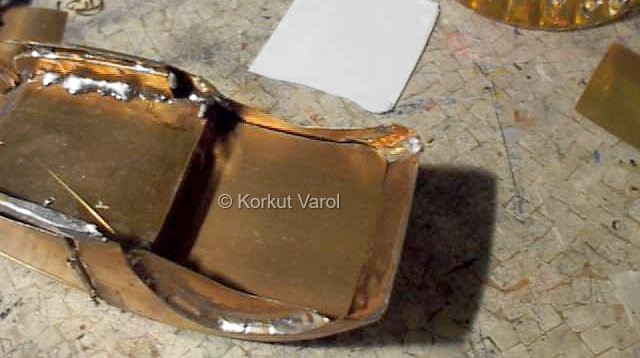
|
The boot hinge
was made from a paper attach
wire.
|

|
| Thin strips
were cut from brass sheet and
glued to the body on the inside, at all edges, to serve as
the flanges
that the boot lid will rest on. |
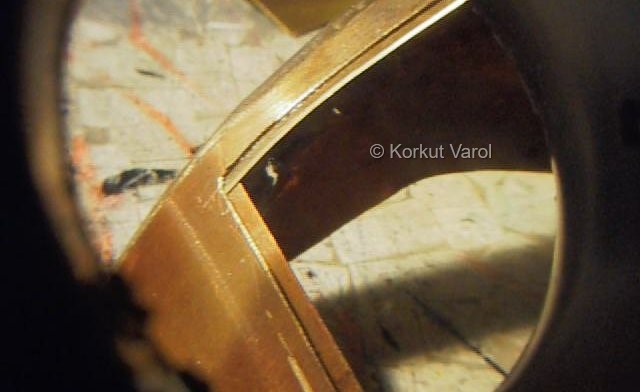
|
|
A strip
was cut from brass sheet and
wrapped around the wire with pliers to make a semi-assembly as shown.
|
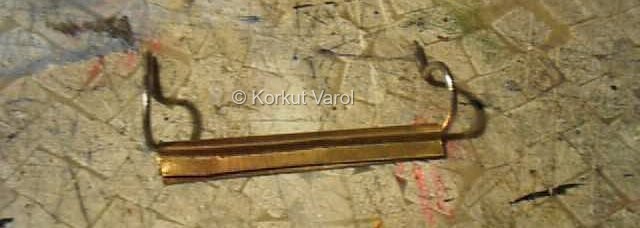
|
| The hinge assembly was glued into
place
with 5-minute epoxy. After it dried, the profiles of the hinge legs
were
checked that they fit the body contour. Some adjustments in bending
angles
were necessary to make it parallel with the body profile. |
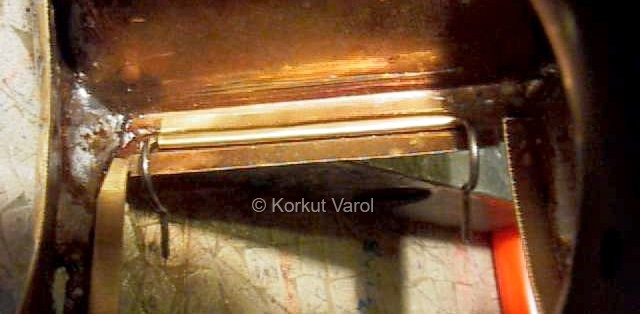
|
| It was possible to put on the boot
lid
and then apply glue to fasten it to the boot hinge. But then, it would
be impossible to detach the boot lid if ever it became necessary during
construction. So, small housings for the legs were built from brass
sheet
as shown. A strip was put on a wire and pliers pressed upon. The final
pressing is shown aside. |
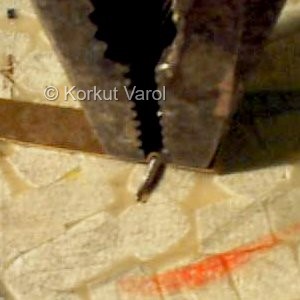 ... ...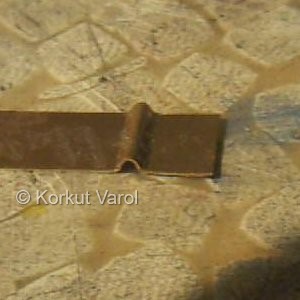
|
| Two housings were prepared as shown. |

|
| The bootlid was put on the body, the
hinge
made to touch the boot lid and the housings stuck on the boot lid with
CA glue. After this, the housings were secured on the boot lid better
by
applying 5-minute epoxy. The boot lid was taken away from the body to
make
sure that the epoxy glue did not accidentally flow and stick to the
hinge
legs. |
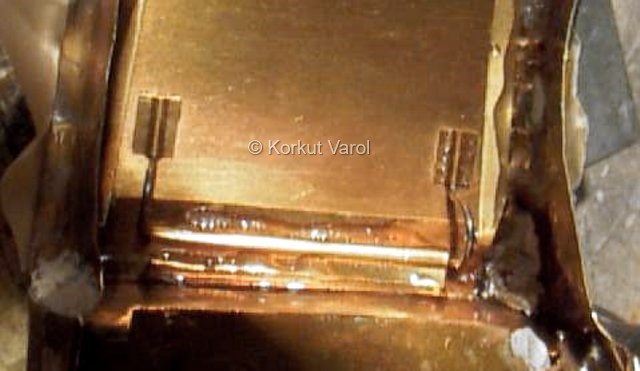
|
| So, here is how it works. |
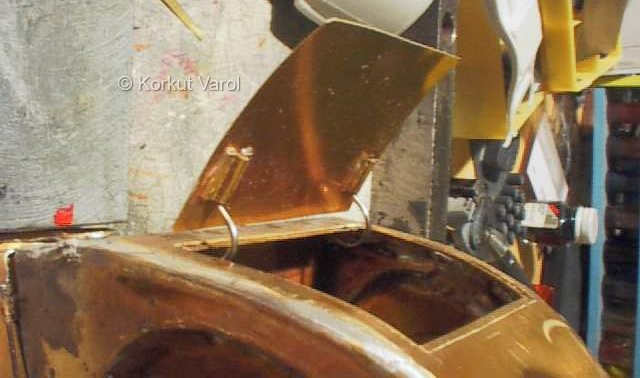
|
| No lids are complete without
reinforcements.
A template was drawn on paper and carried on to a 1.5 mm thick lead
sheet
and the recesses were pre-cut by a paper punch. |
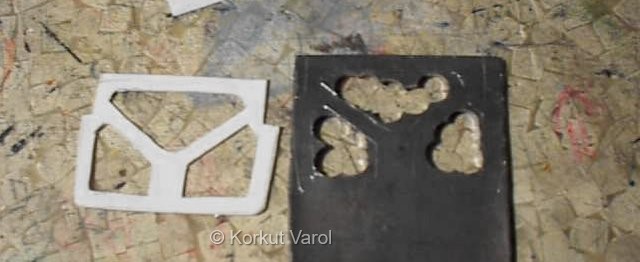
|
| The recesses were put to shape by
hand-filing. |
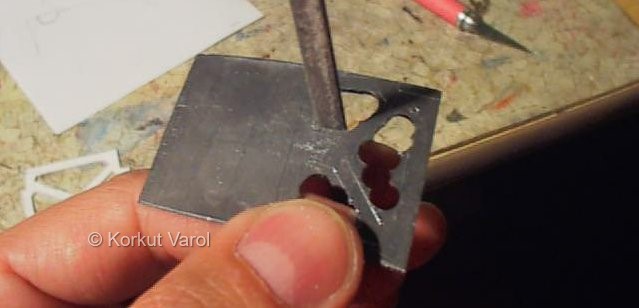
|
| The edges were smoothened and part
made
ready for assembly with the boot lid. |
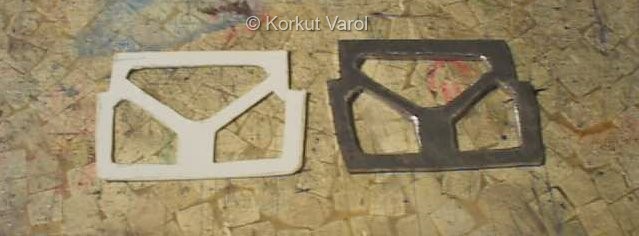
|
| Proper curvature was given by hand to
fit the lid's curvature and the two were stuck together with 5-minute
epoxy. |
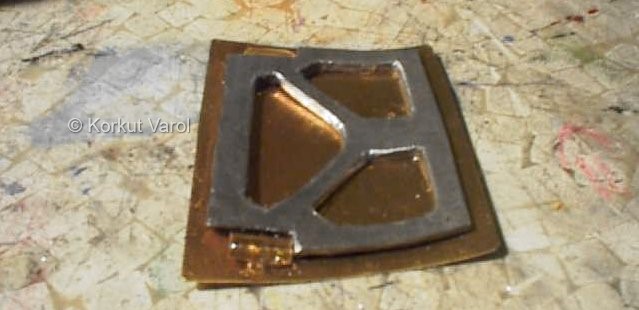
|

|
 
|

